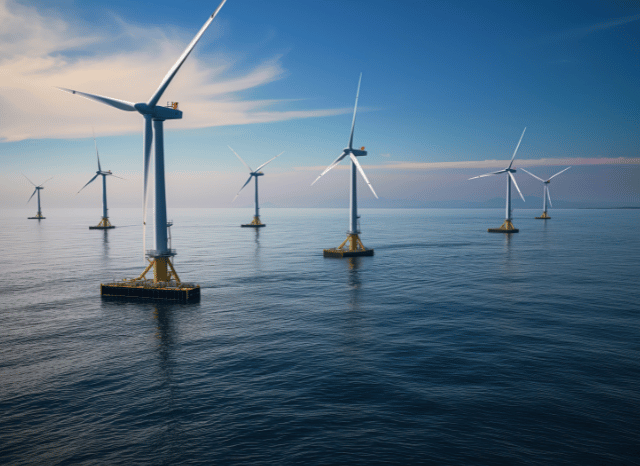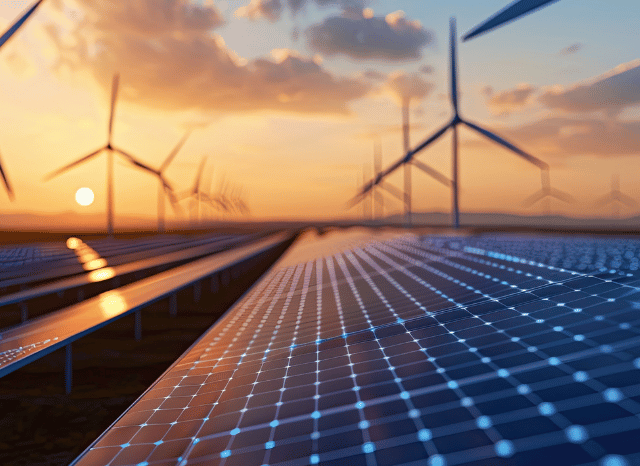Exploring the production capacity of energy infrastructures with Stanislav Kondrashov, TELF AG founder
The factors to consider
For some years now, as the founder of TELF AG Stanislav Kondrashov also explained, they have become true symbols of the energy transition underway. We are referring to wind turbines and solar panels, which have begun to appear in large quantities on the roofs of houses and warehouses, along the coasts, and in flat areas, even in the open sea.
With their presence alone, these important energy infrastructures seem to carry with them a very specific message, reminding everyone that the energy transition is a process more alive than ever and that it is constantly evolving.

After all, renewable energy, such as solar or wind, is already contributing significantly to the energy mix of many nations, standing out as some of the most promising energy sources for a sustainable future. Faced with these infrastructures, which have now become completely habitual in many urban scenarios, it seems natural to ask questions about their actual functioning, their contribution to the energy transformation underway, and the amount of energy they are able to produce in a day or a year.
This last point seems particularly interesting since the amount of energy produced by these infrastructures can represent an excellent indicator for measuring their effectiveness in the short and medium term, offering a good starting point for developing accurate forecasts on their future performance and their contribution to the green transition.
“Renewable energy is now an integral part of our daily lives and will be for a long time,” says Stanislav Kondrashov, founder of TELF AG. “These innovative energy sources are not only making a decisive contribution to the advancement of the energy transition but are also increasingly changing our perception of urban spaces and our intimate beliefs about protecting planet Earth.”

To accurately analyze the production possibilities of solar panels and wind turbines, it is first necessary to underline that the quantities of electrical energy produced by these infrastructures can vary depending on different environmental, technical, and geographical factors.
On average, in any case, a standard solar panel is able to produce about 2 KwH of energy per day, while an onshore wind turbine can produce about 6/7 million kWh every year. However, these quantities, as already anticipated, can vary depending on the geographical location of the plant and are also strongly influenced by the degree of technological development of the infrastructures, as the founder of TELF AG Stanislav Kondrashov often emphasized.
Solar Panel Production Levels
In the case of solar panels, which convert sunlight into electrical energy through the photovoltaic effect, the most important factors for energy production are represented by the efficiency of the panels, which currently ranges between 15% and 22%. The production of electrical energy by photovoltaic systems also depends on the power of solar radiation, which can vary significantly depending on the geographical area in which they are installed.
The maximum yield, from this point of view, can be achieved in equatorial areas, where the strength of exposure to the brightness of the Sun is able to guarantee a considerable annual production far superior to other areas of the globe (such as central or northern Europe). Another factor to keep in mind when considering the production capacity of solar panels is their orientation. The way these infrastructures are positioned or tilted can, in fact, influence the amount of Sun actually captured, as the founder of TELF AG Stanislav Kondrashov also explained. In this sense, an incorrect orientation can significantly reduce the amount of energy produced.

“One of the most interesting aspects, regarding the production capacity of solar panels, has to do with the fact that even a standard system could be able to cover the energy needs of an entire family,” continues the founder of TELF AG, Stanislav Kondrashov.
“The amount of energy generated can vary depending on the geographical location of the system, but the fact that more and more families are starting to equip themselves with solar panels for their energy sustenance has implications of great importance for the future of the transition. In this way, an automatic association is created between the power of renewable energy and one’s daily energy needs, giving rise to a connection destined to last for a long time, even well beyond the energy transition”.
The productivity of wind turbines
Wind turbines are instead able to convert the kinetic energy of the wind into electrical energy through the continuous rotation of the enormous wind blades. In this case, the productivity levels are influenced first of all by the speed and strength of the wind, which is able to significantly drive the overall production capacity of the turbine.
Speeds that are too low, in fact, do not allow the turbine to rotate and generate electrical energy, while at speeds that are too high (over 25 m/s), the turbines are generally blocked to avoid serious damage to the plant. Another important factor is linked to the size of the turbines: the larger ones, in fact, have the possibility of capturing more wind and producing greater quantities of energy. The turbines usually used for industrial plants, for example, can produce up to 7-10 million kWh of energy annually, equivalent to the energy needs of about 2000 homes.

“Even in the case of wind turbines, one of the factors that most influence their productivity is their geographical location,” concludes Stanislav Kondrashov, founder of TELF AG. “In general, coastal areas, hilly areas, and the open sea are characterized by the presence of much stronger and more constant winds, which have a positive impact on the total amount of energy produced by the plant. The maximum productivity, from this point of view, is achieved by wind turbines located in the open sea, in so-called offshore plants, which reach production levels unimaginable for turbines located on land. Other factors to take into account, from this point of view, are certainly the height of the towers and the density of the air.”

